
Last year, on 18 August, I published a piece celebrating San Fernando Valley Day. You see, in the US (and nowhere else, really), people write dates month/day/year. I know, it makes no sense. Chalk another one up for American Exceptionalism. 818 is the area code that closely responds to the San Fernando Valley (although it also serves communities in the Santa Monica Mountains, the Verdugos, and part of Ventura County). I probably wasn’t the first to refer to 18 August as San Fernando Valley Day and definitely wasn’t the first to call it 818 Day. Someone called DJ Habit released a mix on Soundcloud called The First Annual #818 Day Mixtape in 2017. Anyway, love holidays, it was fun to write, and it was one of that last year’s most-read posts so I immediately began thinking about writing a San Gabriel Valley Day for 26 June, or 6/26 in American. I decided, though, to publish it before the actual date, so that readers and can share and prepare for the big day.
There doesn’t seem to be much precedent for San Gabriel Valley Day. In 2021, the City of Pasadena and the Pasadena Convention & Visitors Bureau decided to promote 626 Day as a day to support local businesses in Pasadena. In my experience, many in Pasadena seem to think that their city is synonymous with the San Gabriel Valley. Meanwhile, to those living in other corners of the San Gabriel Valley, many tend to regard it as something else. In 2009, the Los Angeles Times‘s Mapping L.A. project even decided that Pasadena is part of the Verdugos region… which it’s not. No part of the Verdugo Mountains even lie within Pasadena. Anyway, prior to 2021, the only people who celebrated 2/26 were Lilo & Sitch-heads, because Stitch’s birth designation in that franchise was “Experiment 626.”
THE 626 AREA CODE
In Metro Los Angeles, area codes are closely tied to regions and thus regional identity. This was not always true. In 1796, when Los Angeles was just fifteen years old, Johann Sigismund Gottfried Huth proposed a communications system using “speaking tubes” that he called a “telephon.” No area code necessary because users presumably just spoke into the tubes. The electric telephone patented was awarded to Alexander Graham Bell in 1876. There were till no area codes. Area codes first appeared in 1951 in larger cities. New Jersey got 201, New York City got 212, Chicago got 312, and all of Los Angeles got 213. In 1984, Los Angeles had grown so large that it required a second area code, 818, which covered much of Los Angeles County, including the San Gabriel Valley. The 626 area code was created on 14 June 1997. Today, most of Los Angeles County’s regions are served by overlapping codes. In other words, there’s 213/323, 310/424, 657/714, 747/818, and 840/909. 626, in fact, is on only area code that serves a region by itself.
Although the 626 area code service area closely corresponds to San Gabriel Valley, it is not an exact fit. Portions of Alhambra, Pasadena, Rosemead, and South Pasadena are served by 213/323; portions of Hacienda Heights and Industry are served by 562, which mostly serves Southeast Los Angeles; and portions of Glendora, Industry, Rowland Heights, Walnut, and West Covina are served by 909, which mostly serves the Pomona Valley and Inland Empire.
THE SAN GABRIEL VALLEY
Before I came to Los Angeles, I had heard of “the [San Fernando] Valley” but never “the San Gabriel Valley.” I was staying with a friend from Chino, in the Inland Empire. Most days I’d visit friends in Santa Monica, which mean traversing the San Gabriel Valley. I also had Hoa friend, musician Stella Tran, who lived in Monterey Park whom I sometimes visited. I was very curious about the region and she duly played tour guide. She took me to a vegetarian restaurant where all I ate were fake meats. She took me to a KTV joint where knife-wielding gang members kicked in the door to our room looking for someone else. Her Chinese Opera-singing mom whose living room walls were decorated with money folded into flower shapes told me to park down the street and to come through the side door because she didn’t want the neighbors seeing a white guy come ’round. Why oh why, I wondered, isn’t this fascinating place better known?
The San Gabriel Valley is, like all valleys, a low area surrounded by hills. The San Gabriel Valley is hemmed in by the Montebello Hills, Monterey Hills, Puente Hills, Repetto Hills, San Gabriel Mountains, San Jose Hills, and San Rafael Hills It is one of many valleys in Metro Los Angeles but, at about 730 square kilometers in size, it is one of the largest. The San Gabriel Valley is a bit larger than the San Fernando Valley and roughly the same size in area as Lagos if considerably less populated. It is drained by the San Gabriel River, Rio Hondo, Arroyo Seco, San Jose Creek, Alhambra Wash, Arcadia Wash, Big Dalton Wash, Little Dalton Wash, Eaton Wash, San Pasqual Wash, Santa Anita Wash, Sawpit Wash, and other rivers and streams.
The San Gabriel Valley is home to roughly 1.8 million people — about the same as live in the San Fernando Valley. If either were a single city they would become the fifth most populous in the US (overtaking Phoenix) and the second most populous in California, after Los Angeles. The San Gabriel Valley, though, is home to 26 cities: Alhambra, Arcadia, Azusa, Baldwin Park, Bradbury, Covina, Diamond Bar, Duarte, El Monte, Glendora, Industry, Irwindale, La Puente, Monrovia, Monterey Park, Pasadena, Rosemead, San Dimas, San Gabriel, San Marino, Sierra Madre, South El Monte, South Pasadena, Temple City, Walnut, West Covina. The San Gabriel Valley is also home to 26 unincorporated communities: Altadena, Avocado Heights, Azusa Islands, Bassett, Charter Oak, Citrus, Covina Islands, East Azusa, East Pasadena, East San Gabriel, Glendora Islands, Hacienda Heights, Kinneloa Mesa, Mayflower Village, North El Monte, Ramona, Rowland Heights, San Pasqual, South Monrovia Island, South San Gabriel, South San Jose Hills, Unincorporated Azusa, Unincorporated Glendora, Vincent, West Puente Valley, and Valinda. There are also two large unincorporated areas that can’t really be described as communities — or at least not human ones — South Diamond Bar and Whittier Narrows.
HISTORY OF THE SAN GABRIEL VALLEY
Although the ancestors of the Chumash were the first people to live in what’s now Los Angeles, as far as I know, they never made it as far inland as the San Gabriel Valley. Regardless, the Tongva arrived from Sonoran Desert to the east some 10,000 years later and founde most of the area formerly inhabited by the Chumash to have been abandoned thousands of years earlier, most likely after a prolonged series of droughts. There have been Tongva archeological sites dated to roughly 500 BCE in the San Gabriel Valley and they established numerous villages along, mostly along the banks of rivers and streams, including Aleupkingna, Akurangna, Asukangna, Awiingna, Haramokngna, Houtngna, ‘Iisanchangna, Momwathomomuntngna, Pemookangna, Shevaangna, and Weniingna.
The Spanish sailed along the coast of California in 1542 and claimed all that they saw for the empire but didn’t establish a presence in the region until they began building presidios and missions in the late 18th century. In 1769, Catalonian military officer Gaspar de Portolà i Rovira led an overland expedition through the Valley on behalf of Spain. On 8 September 1771 Fray Ángel Fernández de la Somera and Fray Pedro Benito Cambón founded Misión de San Gabriel Arcángel, the first Spanish mission in what’s now Los Angeles County, in the Whittier Narrows — where the region’s two main rivers flow through a gap in the hills toward the Pacific Ocean. The location was chosen, like all California missions, for its distance from the coast (sufficient to dissuade pirate attacks), for its proximity to a fresh water source, and for its location near an exploitable Native labor force — in this case, the inhabitants of ‘Iisanchangna. The mission thrived for five years until 1776, when it was destroyed by the flooding San Gabriel River and Rio Hondo. It was rebuilt on higher ground, near the village of Shevaangna. In 1785, a group of Tongva led by Toypurina, Alijivit, Nicolás José, and Tomasajaquichi rebelled against the mission. They failed in their efforts to drive out the Spanish, though, who after they captured them, publicly lashed them and then imprisoned them.
Spain’s grip on the region would soon loosen, though. On 16 September 1810, Don Miguel Gregorio Antonio Ignacio Hidalgo y Costilla y Gallaga Mandarte Villaseñor urged his fellow citizens to revolt against Spain. In 1821, Spain finally recognized the independence of Mexico, a nation named after another Uto-Aztecan people distantly related to the Tongva, the Mexica. The new Mexican rulers secularized the missions and the San Gabriel Valley was carved into vast ranches, including Rancho Azusa de Dalton, Rancho Azusa de Duarte, Rancho La Puente, Rancho Potrero Grande, Rancho Potrero de Felipe Lugo, Rancho San José, Rancho el Rincón de San Pascual, Rancho La Merced, Rancho Potrero Chico, Rancho San Francisquito, and Rancho Santa Anita.
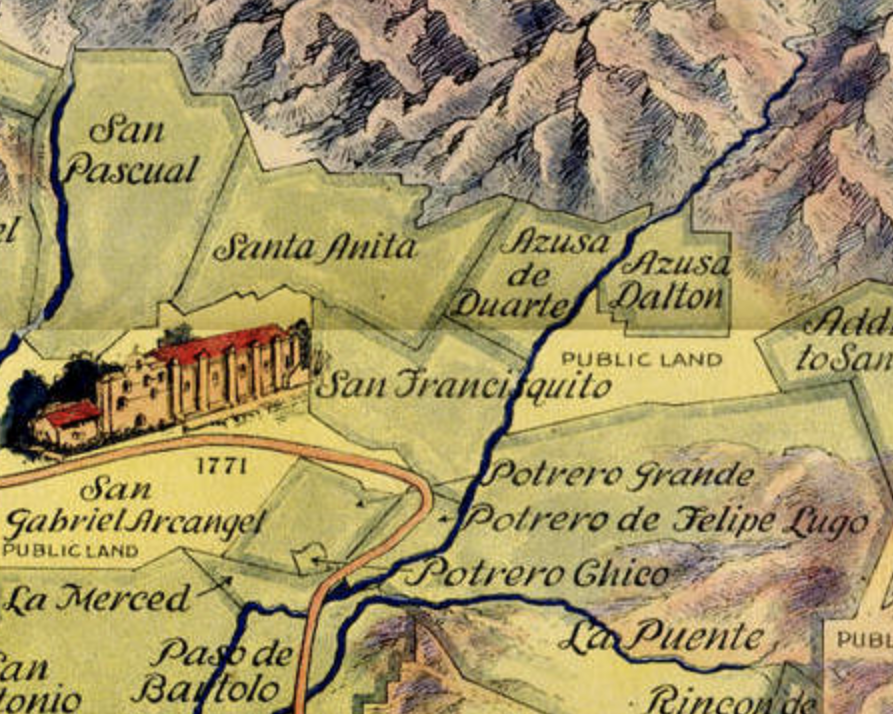
The US invaded Mexico in 1846, instigating the Mexican-American War. The Battle of Río San Gabriel, fought on 8 January 1847, was one of the war’s decisive conflicts. When the war ended in in 1848, the US unburdened Mexico of over half its territory, including what’s now Arizona, Colorado, Nevada, New Mexico, Texas, Utah, and California — the latter of which became a state on 9 September 1850.
The San Gabriel Valley was then dominated by vineyards, citrus orchards, cattle ranches, and horse ranches. Amongst the agricultural workers there were, of course, Mexican laborers. Over time, their ranks were joined by Basques, Chinese, Dutch, Japanese, Filipino, Indian, and Indonesians, among others. The San Gabriel Valley was one of the first regions in Los Angeles County to begin the process of urbanization. Pasadena, incorporated on 19 June 1886, was the first municipality in the San Gabriel Valley and the second in all of Los Angeles County (after the city of Los Angeles). Monrovia incorporated in 1887 and Azusa in 1898.

The Los Angeles and San Gabriel Valley Railroad was created in 1883. Pacific Electric Railway‘s Alhambra-San Gabriel and Monrovia-Glendora line opened in 1902. The San Bernardino Line opened in 1906. Only Pasadena, though, enjoyed widespread streetcar coverage. Tracts and small street streetcar suburbs opened and developed along the passenger rail routes — mostly in the valley’s west and the foothills of the San Gabriels. Oil was discovered in the Montebello Hills in 1917. The economy and demographics of the Valley began to change.

Significant numbers of Japanese settled in Monterey Park in the 1920s. Italians began to move out of the Eastside into the western portion of the valley. The eastern half of the valley was sparsely populated until an explosive development of suburbs following the end of hostilities in the Korean War. Suburbanization slowed after the 1950s boom but continued apace through the 1980s. By the mid-1970s, Hacienda Heights was nicknamed “the Mexican Beverly Hills.” In the late 1970s, Taiwanese immigrants began to settle in the San Gabriel Valley in large numbers after Monterey Park was advertised in Taiwan as “the Chinese Beverly Hills.” The late ’70s and 1980s saw an influx of immigrants and refugees from China, Hong Kong, and Vietnam, and “Little Taipei” moved east, with the Taiwanese. Today, the San Gabriel Valley is an extremely diverse region that is home to large numbers of people with ancestral roots in Armenia, Burma, China, Costa Rica, England, Germany, Hong Kong, India, Indonesia, Ireland, Japan, Korea, Lebanon, Mexico, the Philippines, Spain, Taiwan, and Vietnam. It’s home to at least two widely recognized but unofficial ethnic enclaves, the aforementioned Little Taipei and West Covina’s not-yet-recognized Little Manila.
BEST OF THE SAN GABRIEL VALLEY
SAN GABRIEL VALLEY FILMS
Although the San Gabriel Valley brand is strong and growing now it has emerged relatively recently. An internet search of “San Fernando Valley,” by contrast, yields almost three times as many results as “San Gabriel Valley.” The earliest mention of “The SGV” in a reference to the San Gabriel Valley comes from an Angelfire site about Latino gangs in the San Gabriel Valley published in 2001. While there is practically a whole sub-genre of films about the San Fernando Valley (e.g. Valley Girl, Van Nuys Blvd., and Encino Man), I can’t think of many films shot and set in the San Gabriel Valley. There is, sadly, no San Gabriel Valley Girl, no Valley Boulevard, nor, most sadly of all, did Pauly Shore ever star in an El Monte Man. There was, though, Jessica Yu‘s Ping Pong Playa, a light comedy that might appeal to fans of Pauly Shore that was filmed at least partly in Monterey Park.
Lots of films are shot all over the San Gabriel Valley but they almost always tend to be set somewhere else — in the cases of Back to the Future and Halloween, the fictional towns of Hill Valley and Haddonfield, respectively. From what I know, almost no films or television series are set in the San Gabriel Valley — and when they are. they’re inevitably filmed elsewhere. Thus, even though William “Bill” S. Preston Esq. and Ted “Theodore” Logan, III were supposed to be from San Dimas, their break-out film, Bill & Ted’s Excellent Adventure, was shot around Scottsdale. Big Bang Theory, about nerds at CalTech, was filmed in front of a live studio audience… in Burbank… in the San Fernando Valley. My Crazy Ex-Girlfriend was set in West Covina — but misidentified that suburb as being the “pride of the Inland Empire,” which is not even part of Los Angeles County… although I suppose people in Riverside or San Bernardino County can take pride in West Covina, too.
SAN GABRIEL VALLEY MUSIC
Music isn’t much better. While Bing Crosby with John Scott Trotter and His Orchestra had a number one hit with “San Fernando Valley” back in 1944, the San Gabriel Valley has rarely been celebrated as a region until recently. There are songs about individual communities in the San Gabriel Valley, though, like Ray Stanley‘s “Glendora,” originally performed by Jack Lewis with Zippy Simms Orchestra in 1956. Frank Zappa‘s “Memories of El Monte,” was a hit for the Penguins in 1963 — decades before Zappa would give the world the song “Valley Girl.” One exception is Jan and Dean‘s hit “The Little Old Lady (from Pasadena),” which earns geographic specificity by mentioning that the titular little old lady is “the terror of Colorado Boulevard.”
Van Halen were from Pasadena but, as far as I know, never made much of that — although the Van Halen brothers’ shared a Dutch-Indonesian background with many in the San Gabriel Valley. Joanna Wang, one of my favorite musical artists, was largely raised in the San Gabriel Valley, too, like many Taiwanese Angelenos. In fact, quite a few artists are associated with the San Gabriel Valley, including Adore Delano (Azusa), Autograph (Pasadena), Bei Bei (Temple City), Country Joe (El Monte), DJ Spiñorita (Alhambra), Dread Zeppelin (Sierra Madre), The Gun Club (El Monte), Jason Chen (Arcadia), Kid Congo Powers (La Puente), Kim Carnes (Pasadena and San Marino), Larissa Lam (Diamond Bar), Moore Brothers (Altadena), Motley Crue (Covina), Namek (Irwindale), Nia Peeples (West Covina), Ozma (Pasadena), Pete Jolly (Pasadena), Phil Spector (Alhambra), Scatman John (El Monte), Teena Marie (Pasadena), The Surfaris (Glendora), The Uptight (Alhambra), and Vicki Carr (Rosemead), even if they aren’t exactly out there repping it. I suppose Kenny Loggins, who grew up Alhambra and San Gabriel, could’ve been thinking about the San Gabriel Valley when he sang “Danger Zone.” Someone should ask him.
The Fung Brothers (feat. Jason Chen) released a song, “The 626” in which the comedians, over the instrumental track of Snoop Dogg & Wiz Khalifa (feat. Bruno Mars)’s “Young, Wild & Free,” celebrated the culture of the San Gabriel Valley. The duo’s mannerisms and hand gestures in this video make me squirm in deep, deep discomfort. I’m including it though because the lyrics are pretty clever and one man’s cringe might be another person’s treasure.
With that, I’ll smoothly segue into the “Best of the San Gabriel Valley” section…
BEST MASS & ACTIVE TRANSIT IN THE SAN GABRIEL VALLEY
If you don’t live in the San Gabriel Valley, you need to get there. If you do live there, you need to get around. Even though the San Gabriel Valley is mostly suburban. the healthiest, most pleasant, and most sustainable options are mass and active transit. While not the most walkable region, it does have a lot of good bus, train, and cycling options.
The San Gabriel Valley’s best train line is the L Line, formerly the Gold Line. It was introduced in 2003. It became the L Line in 2020. However, after the Region Connector opens — supposedly by the end of this year — the southern section of the line — the one that goes to the doorstep of Monterey Park — will become part of the E Line. It’s the L Line section that is the most scenic, though, traveling through Pasadena, Arcadia, Monrovia, Duarte, Mordor Irwindale, and Azusa. When the Foothill Extension is completed (almost certainly after 2025), it will go all the way to La Verne, Pomona, Claremont, and Montclair — all in the neighboring Pomona Valley.
Metro’s J Line is a useful Bus Rapid Transit (BRT) line, but its only stop along the El Monte Busway in the San Gabriel Valley is El Monte Station and those only pass through the cities of Alhambra, Monterey Park, Rosemead, and San Gabriel. The San Gabriel Valley is also served by Metrolink’s Riverside and San Bernardino lines, which are good but should ideally run a lot more often. There’s also Amtrak’s Sunset Limited and Texas Eagle, neither of which I’ve yet taken although I can tell you, I would’ve if they traveled at speeds like those found on more modernized railways.
The San Gabriel Valley is reasonably well-served by buses. Coverage is good but service should be more frequent and buses should have dedicated lanes so that they’re not stuck behind cars. The western half of the valley is mostly served by Metro, the eastern side of the valley is primarily served by Foothill Transit. Smaller transit agencies include Alhambra Community Transit, Arcadia Transit, Baldwin Park Transit, Duarte Transit, El Monte Transit, the Gateway Coach, the Go West Shuttle, La Puente LINK, Montebello Bus Lines, Pasadena Transit, Rosemead Explorer, and the Spirit Bus.

As far as active transit goes, there are a couple of bike trails. I’ve never ridden the Rio Hondo Bike Trail. The San Gabriel River Trail, though, is a really good one — well maintained and contiguous (unlike the Los Angeles River Trail). It runs all the way from above Azusa down to the Pacific Ocean, at the border of Long Beach and Seal Beach. The only other remotely substantial dedicated bicycle trail that I know of is the Duarte Bike Trail. If you’re interested in active transit in the San Gabriel Valley, you’ll want to get involved with ActiveSGV, the most visible project of which is the 626 Golden Streets open streets event.
BEST TRANSIT STATION
El Monte Station is the biggest bus station west of the Mississippi… and, presumably, east of Tokyo, north of Mexico City, and south of Toronto. But is biggest always best? Not necessarily, but in this case, yet. It serves seven transit agencies (not including Metrolink, which stops nearby) and roughly 22,000 daily passengers. It is one of just three stations used by Metro (out of 93) with public restrooms (the other two being Union Station and Harbor Gateway Transit Center). Other amenities include arrival displays, seating, and shade… but that’s about it. Don’t go looking for boutiques, cafes, or even vending machines. This is America, where we can’t have nice things.
BEST SAN GABRIEL VALLEY BOOKS, BOOKSTORES, & LIBRARIES
There is a glaring lack of books about the culture of the San Gabriel Valley. There is William F. King‘s The San Gabriel Valley: Chronicles of an Abundant Land., which was published in 1990, and therefore doesn’t touch on the most transformative changes to have taken place in the region since the post-World War II era. There’s also Sandy Gillis and Jill Ganon‘s Hometown Pasadena: The San Gabriel Valley Book. The title and description are reminders of Pasadenans’ views of the interchangeability of Pasadena and the San Gabriel Valley.
A new kind of city book, written by longtime locals who dig deep to reflect the place they find so special. This witty, richly colorful book unlocks the insider secrets of the San Gabriel Valley. With a forewords [sic] by KPCC’s Larry Mantle and cover art by R. Kenton Nelson, it celebrates the people, places and passions that make Pasadena remarkable.
East of East: The Making of Greater El Monte (2020), includes contributions from 31 authors and sounds really interesting but I haven’t read it yet. If there are other or better books about the San Gabriel Valley, let me know. I will say, though, that the San Gabriel Valley has some nice bookstores and a lot of great libraries.
My favorite bookstore in the region, hands down, is Vroman’s founded by Adam Clark Vroman in 1894. Like most bookstores, it has book signings and other events but the scope of the latter and its size elevate it to a sort of community center or, at the very least, a beloved third place. The San Gabriel Valley is also noteworthy for its Chinese language-focused bookstores, like Line Ching Bookstore (which also carries Chinese calligraphy supplies), Happy Books (a Taiwanese book store specializing in manga translated into Chinese), and the Chinese Christian 天道北美網路書房/U.S. Tien Dao Books.
There are so many libraries that I love in the San Gabriel Valley but surely Pasadena’s Central Library, with its coffee shop, Espress Yourself, is one of the best not just in the region but all of Metro Los Angeles. I wish more libraries had tea and coffee (although, at the same time, that fewer coffee houses had bad pun names). NOTE: The Central Library closed on 3 May 2021 for seismic retrofitting that is expected to cost $111 million and last until 2023. The good news is that there are actually tons of book stores and libraries in the San Gabriel Valley.

BEST SAN GABRIEL VALLEY CINEMA
I like AMC Atlantic Times Square 14 because they often show Asian movies that aren’t widely recognized as art and so don’t tend to play at film festivals, and are too not-crap to be streamed on completely worthless streaming sites like Amazon Prime, Hulu, and Netflix. I also have to mention Pacific Theatres Vineland Drive-In, because I love drive-ins and swap meets. Regency Academy Cinemas has great Flashback Tuesday! screenings. The popcorn seasoning, though, makes me sneeze uncontrollably which is very strange.
The greatest cinema in the San Gabriel Valley, though, and one of the best in Metro Los Angeles is Laemmle’s Playhouse 7. I keep hearing rumors that it’s closed, which, were it true, would be a loss for Los Angeles and all of cinema-dom. Laemmle did sell the building in 2020 and it was leased by Landmark, which sadly closed its 15-year-old Westside Pavilion earlier this year. And don’t forget ArcLight Cinemas/Pacific Theatres closed all of their theaters in 2021. It’s a rough time for cinemas right now but (even though film wasn’t invented in Hollywood) perhaps it’s time for governments to step in to preserve the non-generic multiplexes that keep things interesting and are such an integral part of Los Angeles’s culture. Don’t let those screens go dark.
I also feel the need to give a shout-out to Vidéothèque, which — should all of those art houses, revival houses, and “foreign” language cinemas close — will hopefully still have them all available for rent. I know, you probably haven’t rented a physical copy of a film in many years and you may’ve even thought that video rental places had all closed. You’ve probably even gotten used to the endless error messages, lags, and crashes that are part of the miraculous “convenience” streaming. Maybe you’ve even gotten to the point where you’ve convinced yourself that the content on film streaming sites (Criterion and Mubi-excepted) is more than just worth watching but even “pretty good.” There’s still hope for you, though, and just one shelf of tiny Vidéothèque has more quality than the entire landfill cinema selection of all of your mainstream streamers combined.
SAN GABRIEL VALLEY STREET MOST DESERVING OF A MAKEOVER
Foothill Transit’s 187 and 188 lines connect Huntington Drive, Foothill Boulevard, and Historic Route 66 into a fairly seamless route that suggests that they are one road, sometimes running parallel to one another and sometimes. into one another. Anyone who’s ever traveled along any suburban or small town stretch of Route 66 will recognize it by the low buildings — including many mid-20th century restaurants, service stations, and motels — in many cases advertised by buzzing neon or flashing florescent bulb-lit signs. Huntington Drive was also part of Route 66 but much of it is as dangerous and as wide as an interstate because it was originally designed to accommodate the “Red Cars” of Henry Huntington’s Pacific Electric Railway. It could easily accommodate a bicycle trail in the median, dedicated bus-only lanes, and still have eight lanes left over for cars — which would be an improvement but for much of its length, there’s not much to see.
The street most deserving a makeover, though, is Valley Boulevard, which is as close as anything to being the San Gabriel Valley’s Main Street. I have biked and walked its length from its western terminus in Boyle Heights to Avocado Heights, where the San Gabriel Valley Girl I dated lived. It is the main street of so many diverse communities and for most of its length is seven-car lanes wide. That means it could be redesigned with dedicated bus lanes, bike lanes, a median, and still have room for those whose steering wheels will be only pried from their cold, dead hands.
FOOD IN THE SAN GABRIEL VALLEY
Pretty much everyone eats and the San Gabriel Valley has so much food history and culture that I decided to to break it up into several subcategories. Esther and Harry Snyder opened the first In-N-Out Burger in Baldwin Park in 1948 (and was demolished to make way for the 10 Freeway). It was also in 1948 that Verne Winchell opened the first Winchell Donut House in Temple City. The San Gabriel Valley is home to the first Trader Joe’s, founded in Pasadena by Joe Coulombe in 1967. In 1978, McDonald’s built the McDonald’s Production Studio — a fake McDonald’s — that is used in advertisements and cynical cash-grabs like Mac & Me to portray a McDonald’s. Of course, it’s my favorite McDonald’s. Huy Fong, makers of America’s favorite brand of sriracha, moved from Chinatown to Rosemead in 1987 and to an even bigger factory in Irwindale in 2010.
In the past few decades, corresponding with the region’s significant demographic changes, The San Gabriel Valley has become less known for burger chains than for Asian restaurant chains, including Noodle World (Monterey Park, 1993), Tea Station 加州茶棧 (Alhambra, 1996), Tapioca Express (品客多) (Alhambra, 1999), Mr. Baguette (Rosemead, 2003), Half & Half Tea Express (San Gabriel, 2008), Chengdu Taste (Alhambra, 2013), Northern Cafe (Hacienda Heights, 2014), Premier Dessert Art (Monterey Park, 2014), Tan-Cha (Rowland Heights, 2016), and Dan Modern Chinese (Pasadena, 2018).
BEST OLD SCHOOL ITALIAN
Both the San Fernando and San Gabriel valleys are home to several legacy Italian American joints that serve both delicious food and as reminders of the mid-20th century exodus of Italian Americans out of Little Italy and into the suburbs of the surrounding valleys. I love Italian food and I recognize that purists sneer at red-and-white checker table cloth Italian places where the food is inevitably every bit as heavy as the interiors are dark and cluttered. You can like both (see also American Chinese cuisine and other Overseas Chinese Cuisines vs. “authentic” regional Chinese Cuisines). Both American Italian and “authentic” Italian deserve to co-exist in their own lanes. The San Gabriel Valley is home to Claro’s Markets (the first of which opened in 1948), Capri Deli and Petrillo’s Pizza (both 1954), Domenico’s (1960), Mama Petrillo’s (1961). My favorite is Di Pilla’s (1967), though.
BEST LEGACY RESTAURANT
Most food writing today about the San Gabriel Valley tends, understandably, to be about the many examples of excellent regional Chinese cuisines represented. I love old restaurants, though, if less for their menus (which tend to have few, if any vegetarian options that aren’t battered, deep-fried, and served with ranch dressing). I love the neon signs, the plush booths, the dim lighting, the anthropology, the historic status, and the architecture — and of course, those framed, autographed headshots of faintly recognizable character actors that hang on the wall. But, since I don’t really feel qualified as a vegetarian in ranking animal-based restaurants, I’ll just list the region’s oldest restaurants — those more than fifty years old.
The Derby and Du-Par’s (both of which opened in 1938) are the oldest. They’re followed (excluding the aforementioned Italian places) by Bun N Burger (1941); Twohey’s (1943); Gus’s BBQ and Jolly Jug (both 1946); El Toreo (1950); The Hat (1951); Rod’s Grill (1957); Connal’s (1958); Jim’s Famous Quarterpound Burger (1960); Pepe’s Finest Mexican Food and Tops Junior (both 1962); Casa-Calderon and Pie’n Burger (both 1963); Clearman’s North Woods Inn (1966); San Marino Grill & Seafood (1965); Clearman’s North Woods Inn of Covina, El Sombrero, Pinnacle Peak Steakhouse, and Taco Lita (all 1967); Morrow’s Taco Treat (1969); and Shakers (1971).
BEST VEGETARIAN RESTAURANT
There are so many delicious and varied vegetarian restaurants in the San Gabriel Valley that it’s, again, hard to single one out as the best. Surely it was the influx of Taiwanese, more than anything, that saved Los Angeles vegetarians from mashed carrots, alfalfa sprout sandwiches, and lentil loaf — not that that was the sort of vegetarian food you’d have found at the wonderfully greasy institution, Orean, The Health Express (which I haven’t been to since it became Ricchardo’s, The Total Vegetarian). At the vegetarian restaurant that I earlier mentioned that Stella me took to, I ate mock goose, mock squid, and mock kidneys– all of which I enjoyed although I don’t think I’d ever eaten real goose more than once and never kidneys or squid. they probably came from Vege USA LLC, a mock-meat wholesaler in Monrovia that imports lots of mock meats from Taiwan.
I’ve been to a couple of vegetarian Taiwanese places in the San Gabriel Valley, including Bean Sprouts, Hsi Lai Temple, and Garden Fresh Restaurant — but Taiwan is the second-most vegetarian country in the world so when I want Taiwanese, I more often than not find something good and vegetarian in not-strictly-vegetarian restaurants. If I’m in the mood to eat Chinese food until it hurts, I have to go with Happy Family Vegetarian Restaurant 欣園素菜館. Vege Paradise is also good. My friend, Mike, swears by Thiện Tâm for veggie Vietnamese but I haven’t tried it yet.
I’ve still yet to try Blend It Healthy, Bodhi Vegetarian Supply Inc 菩提素食, Comal L.A., Covina Tasty 風味冰淇淋素漢堡店, Grassroots, Green Green Trees Your Vegan Kitchen, Heartland Cafe & Mart, India Fresh, Lunar Feast Bodhi Veggie, Namaste Spiceland, Oh Happy Days, One Veg World, Plant Love Food, Real Food Daily, Sweet Veggie 素香庭, Szechuwan Garden, Tacos Sín Karma, The Pizza Plant, Veggie Grill, Veggie Life Restaurant 越南素食餐, and White Springs Cafe.
BEST BARS & BREWERIES
Just as I love old restaurants, I also love old bars. Unlike old restaurants, however, at bars, I can consume almost anything on offer (I do abstain from Bud Light). The oldest bar in the San Gabriel Valley is Alhambra’s Jay Dee Cafe, which opened in 1944 and is my favorite dive bar in the San Gabriel Valley. As the name suggests, Jay Dee Cafe does serve food, too, although I have stuck to drinks. The Barkley (1951), the Venice Room (1955), The Station (1977), and Drinkers Hall of Fame (1983) are all also properly disreputable. I still need to check out 1881 (1946), Silver Dollar Saloon (1953), and Al’s Cocktails (c. 1966), and First Cabin Bar (1976).

My favorite bar in the San Gabriel Valley is Indian, the Tavern, a Taiwanese pijiu wu with few rivals since the unfortunate closure of Jurassic. I actually haven’t been since the change from Uncle Yu Indian Theme Tavern but its name has changed several times over the years. It always seems to remain pretty much the same, though, namely a place that looks like it used to be a Clearman’s North Woods in which the waitstaff dress vaguely like the indigenous people of the Great Plains (but, honestly, more like your average outdoor music festival-goer) It makes no since and I love it. I suppose one could argue that Lucky Baldwins, a British Pub, is also cultural appropriation if one was grasping for outrage. I like it a lot too. Bahooka, like all tiki bars, was definitely cultural appropriation, and I still mourn its passing by pouring out a Bahooka Bowl. Rufus, I hope you’re still with us. If not, RIP.
My favorite brewery in the San Gabriel Valley is Pacific Plate, my favorite wine bar/shop is Mission Wines, and I still need to check out Nova Brewing Co., which is one of the nation’s few extant sake breweries — and the newest in a surprisingly long local sake brewing tradition. Of course, I have to mention the Irwindale Brewery, which Miller opened in 1980. In 2020, Molson Coors sold it to Pabst. I’m not sure if the new owners over tours, like the old ones did, but if you’ve never been inside a macrobrewery, it’s a sight to behold.
BEST NIGHT MARKET

My favorite night market is 素食夜市小吃園遊會 Happy Lantern Green Night Market, a small vegetarian night market that only takes place once a year, so obviously it would be great if it took place more often (and outside). The MPK Night Market should also take place more often. I would vote for 626 Night Market, the biggest in the region, but since it moved from Downtown Pasadena to a vast and desolate parking lot in Arcadia, it’s less mass transit-accessible and less pleasant. Who drives to a night market?
BEST DRUG STORE/PHARMACY
Fair Oaks Pharmacy, which opened in 1915, is the remedy to all of those horrible, joyless, main street-killing, unscrupulous, soul-sucking, strip-mall staple, box chain pharmacies. Fair Oaks Pharmacy, unlike multinational corporate pharmacies, is one of the only drugstores that’s still a third place. No one but a weird masochist wants to hang out in a like CVS, Rite-Aid, and Walgreens — all of which are the Walmarts of the drugstore world. Like all of the best corner drugstores, Fair Oaks hast a pharmacy, naturally, but also a lunch counter as well as tons of toys, treats, and actual charm.
BEST DOWNTOWN:
Pasadena. I suppose that the most populous city in the San Gabriel Valley has the best downtown should come as no surprise but Pasadena’s is heads and tails above the downtowns of the only slightly smaller cities car-oriented. San Gabriel Valley suburbs of West Covina and El Monte — the downtown of which remains car-oriented and empty. In fact, El Monte’s tallest building is a parking garage. Downtown Pasadena, on the other hand, has vibrant, walkable Old Town; pretty, tree-lined Green Street, stately, spooky Castle Green; the beautiful Mediterranean Revival Civic Center; the handsome Corporate International mid-rises of the Financial District; Hugus, Miller, and Smith alleys; and quite possibly the only location of King Taco with taquitos on the menu. It’s also served by light rail, bus, and soon, BRT. They are also adding housing to Downtown Pasadena. Honorary mention goes to the small but vibrant downtowns of Alhambra, Azusa, Glendora, Monrovia, Monterey Park, San Dimas, and South Pasadena.
BEST MID-RISE
Sears, Roebuck and Company, Pacific Coast Territory Administrative Offices… better known as “the Blue Cube.” The Blue cube was designed by A.C. Martin & Associates in the Late Modern style. It was completed in 1971. Although only twelve stories tall, its windows are designed to make it appear twice that. Sears moved out in the 1980s and it was purchased by the Los Angeles County Department of Public Works.
Honorary mention goes to West Covina’s thirteen-story Eastland Tower, completed in 1989. Honestly, it’s not more attractive than any of the 33 mid-and-high rises of Pasadena. There’s something about solitary skyscrapers, though, that makes them appear grander than they otherwise would, dramatically rising as they like Orthanc rising above the sprawling plains of Isengard. And in the case of Eastland Tower, it’s not Saruman up top, but the giant, grinning Jollibee. Shout-outs, too, to West Covina’s six-story New Formalist Chase Bank Building (1969) and El Monte’s seven-story International Style Cathay Bank Building (1972).

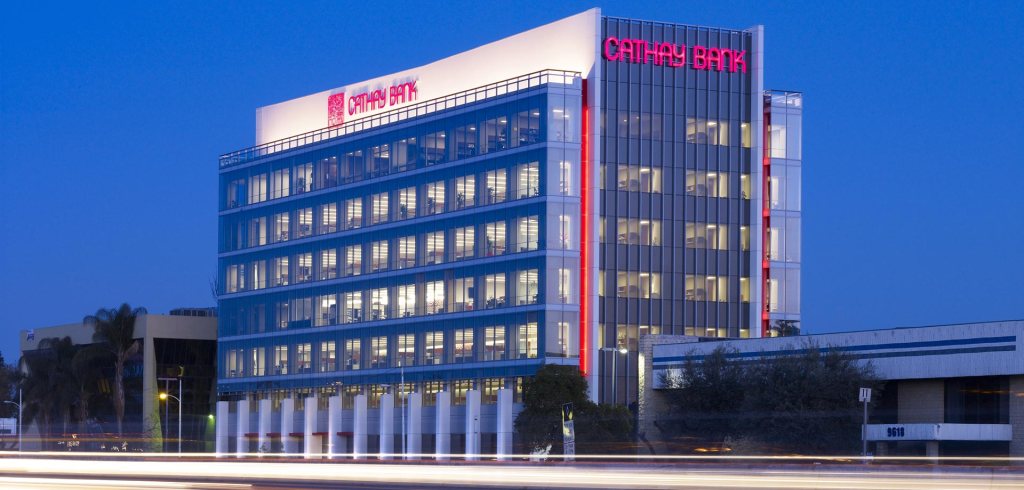
BEST SAN GABRIEL VALLEY MALL
The best mall in the San Gabriel Valley is Atlantic Times Square, nicknamed “the Asian-Americana” by Stella. Honestly, I don’t have a lot of use for malls but one that people live above is better to me than one that’s not. It just seems so wonderfully grim, disconcerting, and dystopian. Also, I like its multiplex cinema, the aforementioned AMC Atlantic Times Square 14, which sometimes shows films by the great but underrated Johnnie To movies. Like all malls, it’s got lots of shops (including, in this case, Daiso, Sun Merry / Happy Lemon, and Ten Ren’s) but unlike it rest, it’s got the aforementioned Happy Family.

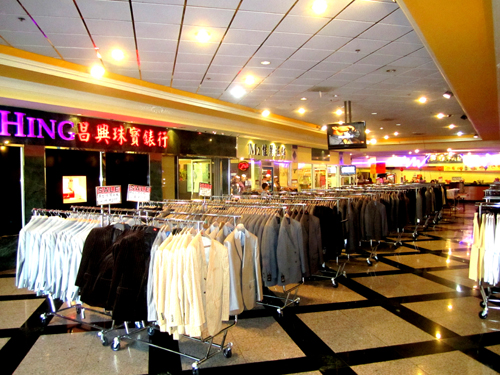

That said, there are more malls in the San Gabriel Valley than any other region of Los Angeles that have some appeal, including Diamond Plaza, Hilton Plaza, Hong Kong Plaza, Life Plaza Center, San Gabriel Square (aka “Chinese Disneyland”), Sunny Plaza, and Westfield Santa Anita. Also, shout out to the Pepto Abyssmal Atlantic Place Shopping Center, because for lovers of liminality, a dead (or dying) mall is better than most. Another shout out to the truly super San Gabriel Super Store, which is primarily a grocery store but almost qualifies as a swap meet/mall.
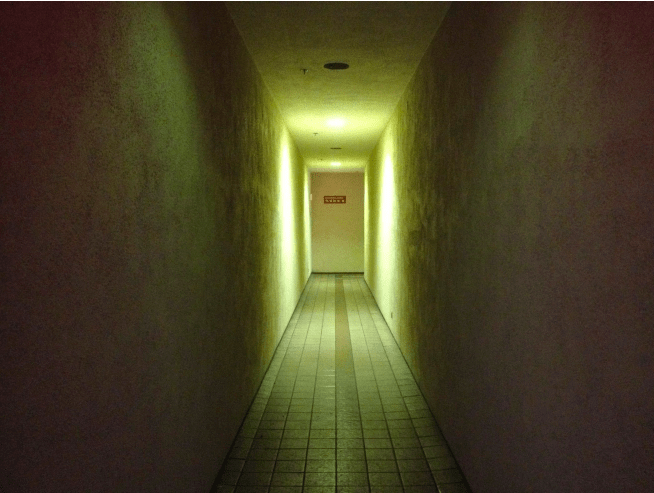

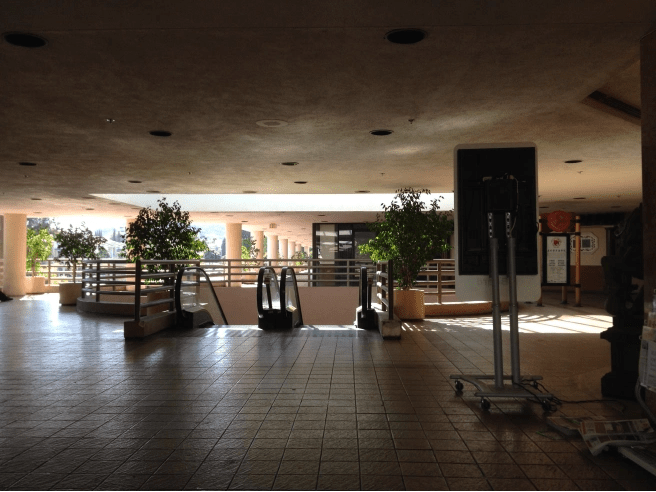
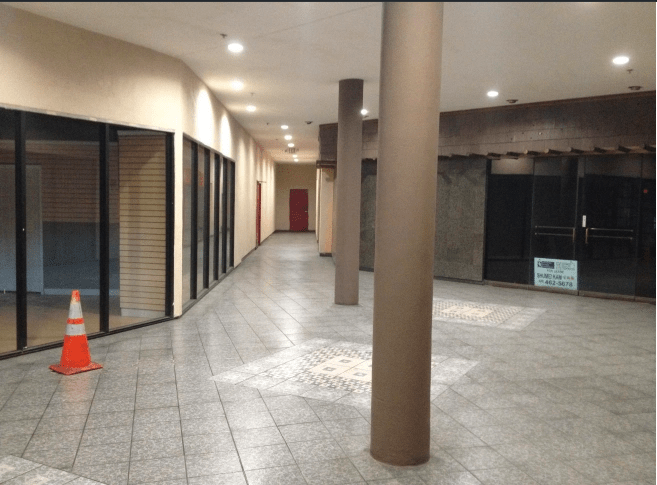

BEST MUSEUMS
I hate to cop out but it’s hard to choose a best museum. The Norton Simon Museum is great. Founded in 1969, is home to an excellent collection of European paintings, sculptures, and tapestries; Asian sculptures (some of which seem to have been acquired through dubious methods), paintings, and woodblock prints all in a pleasant setting with Rodins and a pond that’s home to Canada geese. The theater presents lectures, symposia, dance, and musical performances.
I also love the USC Pacific Asia Museum, though. Founded in 1971, it’s home to thousands of art objects from throughout Asia and the Pacific Islands, and is housed inside a building designed by Marston, Van Pelt & Maybury to resemble an imperial Chinese palace. It also has a charming courtyard with a pond and garden.
Finally, while I usually visit the Huntington just to stroll the gardens, it is also an art museum (and library) that is worth visiting for its collection of 18th and 19th century European art, and 17th-to-mid-20th century American art, and related cultural programing.
I haven’t been to the Bunny Museum but of course, Huell Howser went there. The San Gabriel Valley is also home to the Altadena Historical Society, Duarte Historical Society & Museum, El Molino Viejo, Justice Brothers Racing Museum, Mission San Gabriel Arcángel, the Monrovia Historical Museum, the Pasadena Museum of History, and Workman and Temple Family Homestead Museum.
BEST GARDENS
I love the Los Angeles County Arboretum and Botanic Garden. It’s 51.4 hectare grounds which hosts an annual winter lantern festival called Moonlight Forest; Los Angeles Mycological Society‘s Mushroom Fair; Elias Jackson “Lucky” Baldwin‘s historic Queen Anne home; an historic Atchison, Topeka and Santa Fe Railway depot; Asian, Australian, Mediterranean, North American, South American, and Southern African gardens; and a muster of noisy but pretty peafowl.
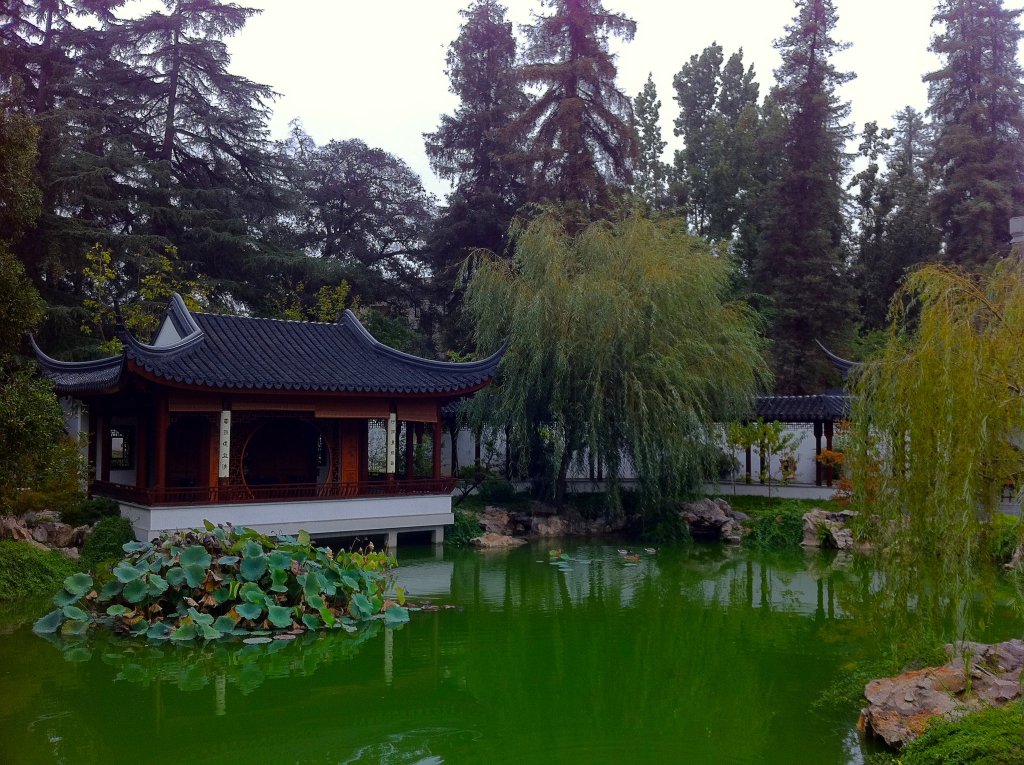
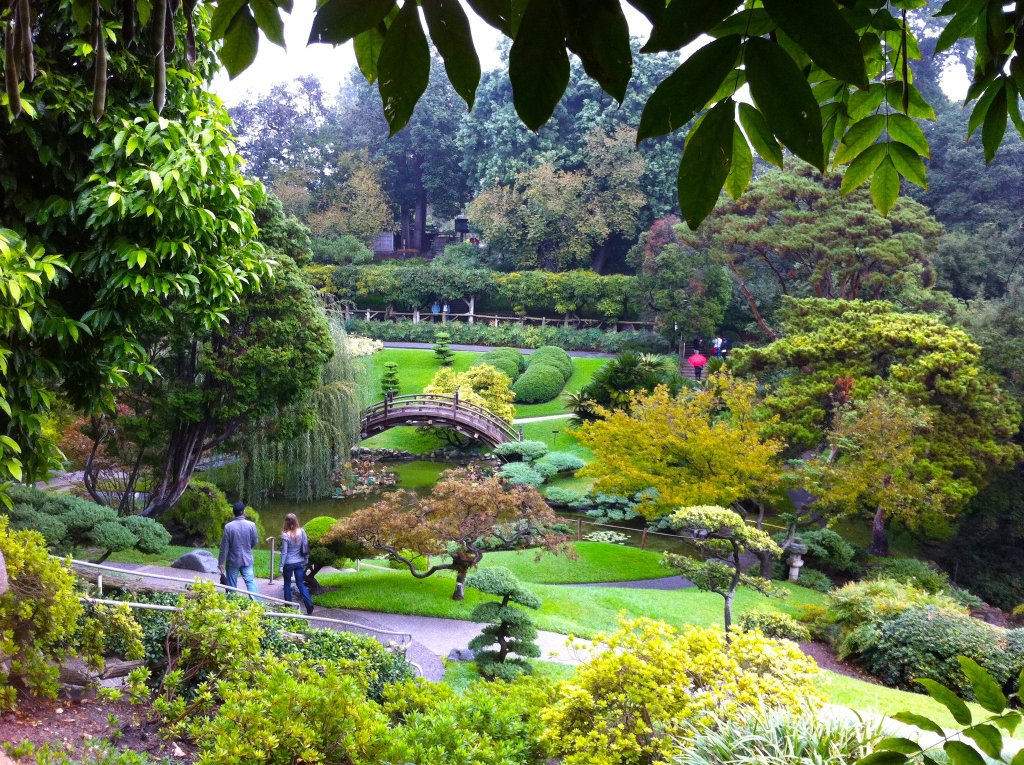
That said, surely the Huntington Library, Art Museum, and Botanical Gardens has a slight edge over the arboretum. Like the arboretum, its roots are in the estate of a tycoon from out east, in this case, railroad and real estate magnate Henry E. Huntington. The 49 hectare estate boasts an Australian garden, a Japanese garden, a subtropical garden, a desert garden, a camellia garden, a rose garden, and Liu Fang Yuan, the Chinese Garden. There are lily ponds, a library, an art collection. There’s an indoor rain forest, a cloud forest, a peat bog, and the famous corpse flower. There are public lectures, academic conferences, botanical workshops, live music, and more. It’s also where my Master Gardener graduation took place and I’d really like it if the folks there saw fit to let me spend the night wandering the grounds. Please make that happen.
Other gardens include Arlington Garden, Glendora Arboretum and Botanical Garden, and Storrier Stearns Japanese Garden, none of which I’ve yet visited.
BEST PARK
There are bigger parks, like Peter F. Schabarum Regional Park, Santa Fe Dam Recreation Center, and Whittier Narrows — but if if people in the San Gabriel Valley want wilderness, they can easily head up into the San Gabriel Mountains. There are parks which annoy me, like Lacy Park, which although pretty, charges an entrance fee to people from outside of tony San Marino. My favorite park, though, is Alhambra Park. It has a swimming pool, tennis courts, a veterans’ memorial, a water playground, a walking path, a bandshell, basketball courts, swing sets, trees, little lending library, grills, and movie nights. What else could you want? It’s a great park!
BEST BADMINTON CLUB
San Gabriel Valley Badminton Club. I actually haven’t been to Los Angeles Badminton Club in El Monte — so I shouldn’t say that one is better than the other. I actually don’t know. I just love badminton and wanted to bring attention to the fact that there are two clubs in the San Gabriel Valley. El Monte is also home to Wayne’s Badminton Sporting Supplies. Play more badminton — it’s one of the world’s great sports, you dummy!
BEST HOUSE OF WORSHIP (BASED SOLELY ON ARCHITECTURE)
I’m not religious but I love architecture and churches are often among the most interesting examples of architecture in many otherwise residential suburbs. There are loads of beautiful churches in the San Gabriel Valley, including Gothic Revival cathedrals and bold avant-garde mid-20th century experiments, and of course, the dark, historic Mission San Gabriel Arcángel. Pasadena is home to many of them, including Church of the Angels, All Saints Episcopal Church, First Baptist Church Pasadena, the Romanesque Revival St. Andrew Catholic Church, the Late Modern Lake Avenue Congregational Church, and Savior Episcopal Church, Does the Pasadena Scottish Rite count as a house of worship?
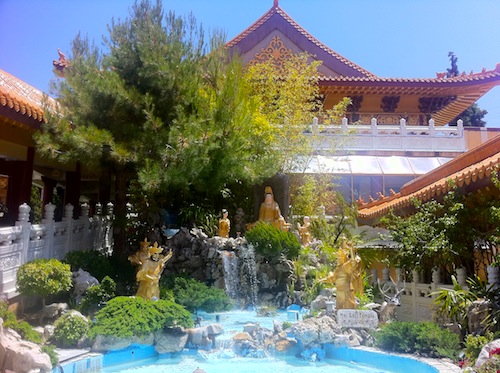
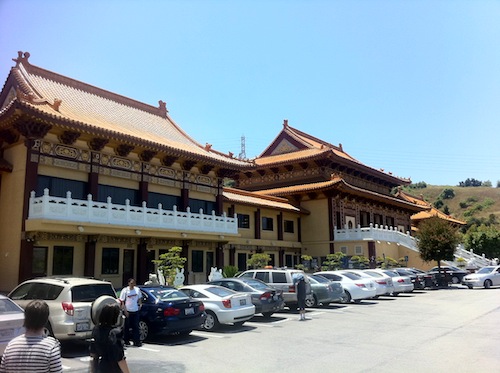


My favorite house of worship, though, isn’t a church but a Buddhist Temple, 佛光山西來寺Fo Guang Shan Hsi Lai Temple, the biggest Buddhist Temple in the Americas. Hsi Lai (“Coming West”). It’s interesting to note that before breaking ground in Hacienda Heights in 1985, they were rebuffed by Gardena and Alhambra. Today, Hacienda Heights and Gardena have Asian pluralities and Alhambra an outright majority but back then things were different. The temple’s completion in 1988 was delayed by years of staunch opposition from totally rational and not-at-all xenophobic residents who expressed fears, as reported in the Los Angeles Times, that Buddhism was a cult that would entrap their children and that the temple would be a site of animal sacrifices. In fact, the food served by the temple is vegetarian. Its vast grounds also include a gardens, shrines, halls, a pagoda, and a translation and publishing center. I don’t know how many, if any, impressionable teenagers were led astray by the Enlightened One.
BEST NURSERY
San Gabriel Nursery & Florist is a family-owned and operated nursery established in 1923. Its founders, Fred and Mitoko Yoshimura, were one of many San Gabriel Valley Japanese families who operated nurseries and there is so much more knowledge, selection, and care evident in it, like any family-owned business, than the struggling, moldy, parasite-infested plants you’ll find at Home Depot. The family’s story is a dramatic and touching one.
BEST PODCAST
SGV Connect is Streetsblog‘s San Gabriel Valley podcast, so, naturally, is focused on transportation. The only other San Gabriel Valley-focused podcast that I know of is SGV Weekly, which I like and listen to even though its tagline is “From Alhambra to Pomona, this is your fix of the 626.” Pomona, of course, is not in the San Gabriel Valley, it’s in the Pomona Valley (i.e. Chino, Chino Hills, Claremont, La Verne, Montclair, Ontario, Pomona, Rancho Cucamonga, and Upland)… which is located east of the San Gabriel Valley… and its area codes are 909 and 840, not 626. The Pomona Valley deserves its own podcast. I suppose it’s doubtful but are there any other podcasts focused on the San Gabriel Valley?
SAN GABRIEL VALLEY THEATERS
No “best” for this category because I’ve never seen a play in any San Gabriel Valley playhouse — but not because I don’t love theater. I’ve seen plays in Hollywood Theatre Row, the Cavern Club Theater, East West Players, the Kirk Douglas Theatre, the Montalban, the Ahmanson Theatre, the NoHo Arts District, as well as improvised, experimental spaces. I subscribe to MarqueeTV and I regularly listen to the audio theater productions of L.A. Theatre Works. Frankly, I don’t understand why anyone who doesn’t love live theater even bothers living in a big city. However — and it’s a big however. — I’ve yet to attend any theater performance in the San Gabriel Valley. Still, because I love theater, I wanted to include this category anyway to promote those in the region, including the Pasadena Playhouse, Boston Court, the Fremont Center Theater, A Noise Within, San Gabriel Mission Playhouse, and Sierra Madre Playhouse. I vow to see plays in at least some of them someday.
BEST UNIVERSITY CAMPUS
Even as someone who’s been out of school for a long time, I still love campuses. Colleges and universities usually have lectures, music performance, theater, dance, film programs — not to mention striking architecture and pleasant landscaping — all things like that that make you want to visit them, even if you’re not enrolled. The San Gabriel Valley is home to the Craig Ellwood-designed ArtCenter College of Design, Azusa Pacific University, Citrus College, Cal Poly Pomona (which is partly located in Ramona), East Los Angeles College (annexed from East Los Angeles by Monterey Park), Fuller Theological Seminary, and Pasadena City College. My favorite, though, is CalTech — the campus of which I last visited a few years ago for a program about the Cassini probe, to admire the public art, architecture (hello Beckman Auditorium) and just to stroll through the grounds. There are also utility tunnels underneath that are popular with explorers although I haven’t gone down there and I assume that its at the very least frowned on, if not downright illegal.
THINGS IN THE VALLEY I’VE STILL YET TO CHECK OUT
There are lots of places I’ve never gone in the San Gabriel Valley, of course, not just CalTech’s “steam tunnels.” It’s inevitable even after living in Los Angeles for 23 years unless you’re lucky enough not to have to work on the side and pay bills. Anyway, my list of places I’d still like to check out that I haven’t already mentioned include Raging Waters, Rubel Castle, and Zorthian Ranch. Let me know what else I’m missing in the comments.
Support Eric Brightwell on Patreon



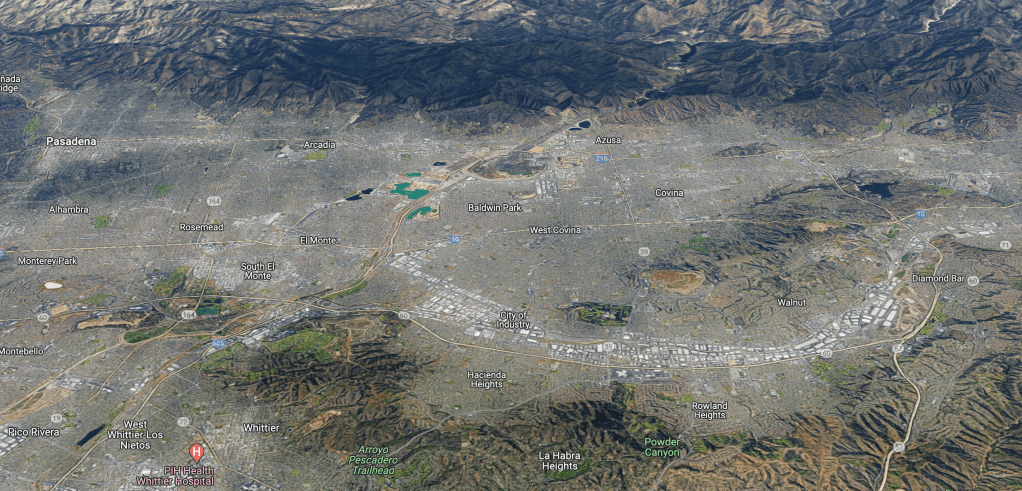

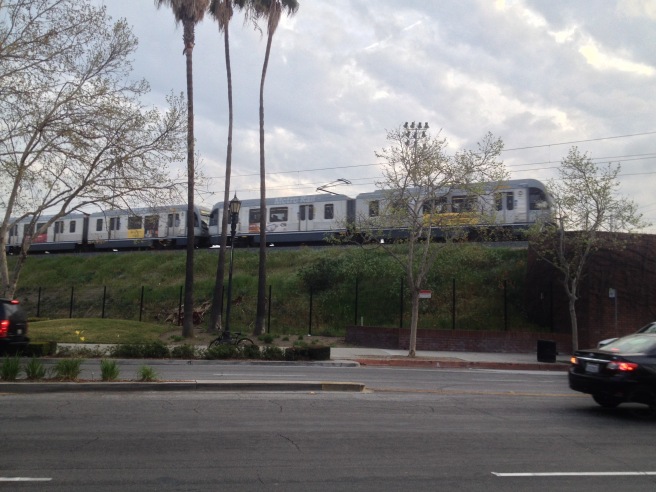

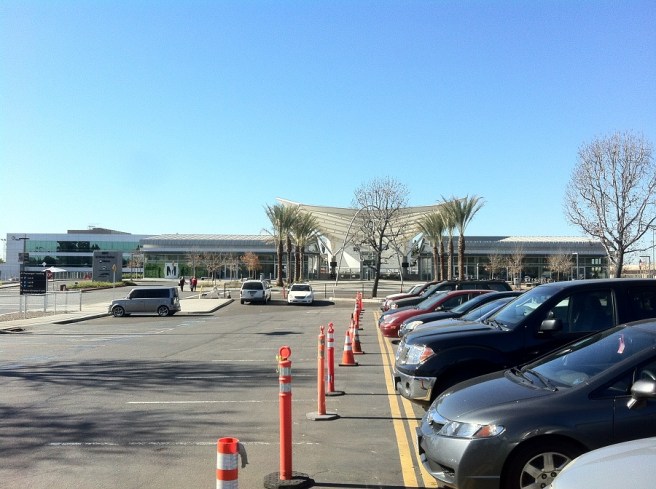



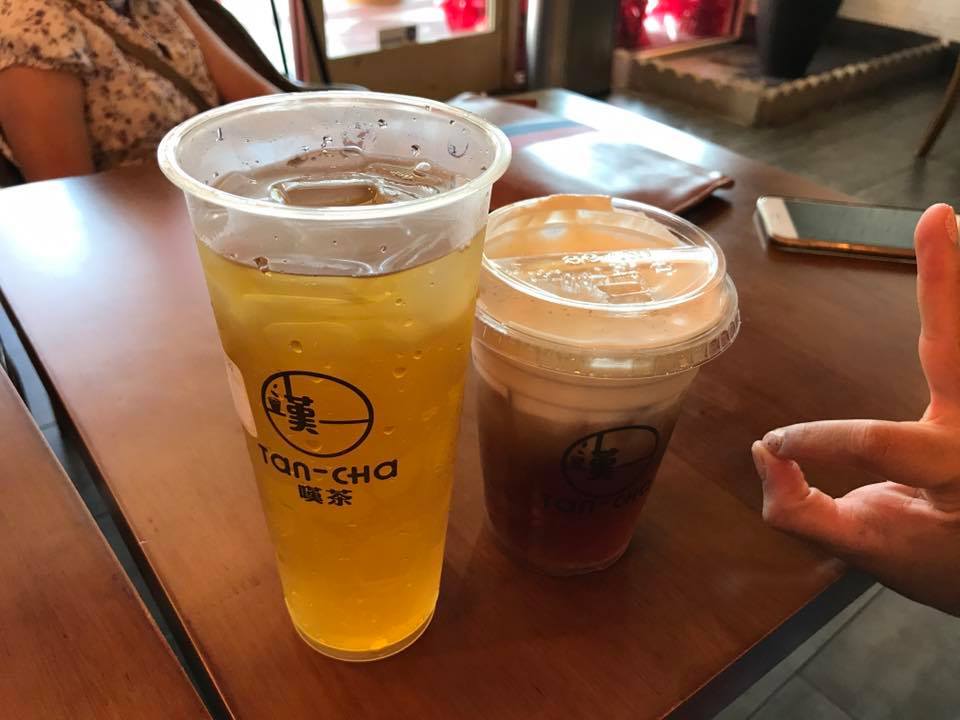

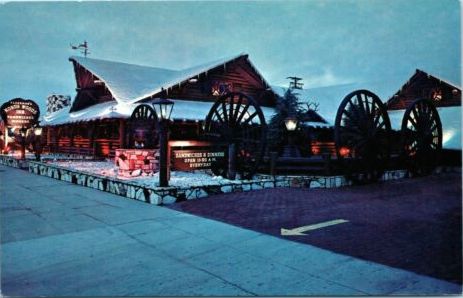
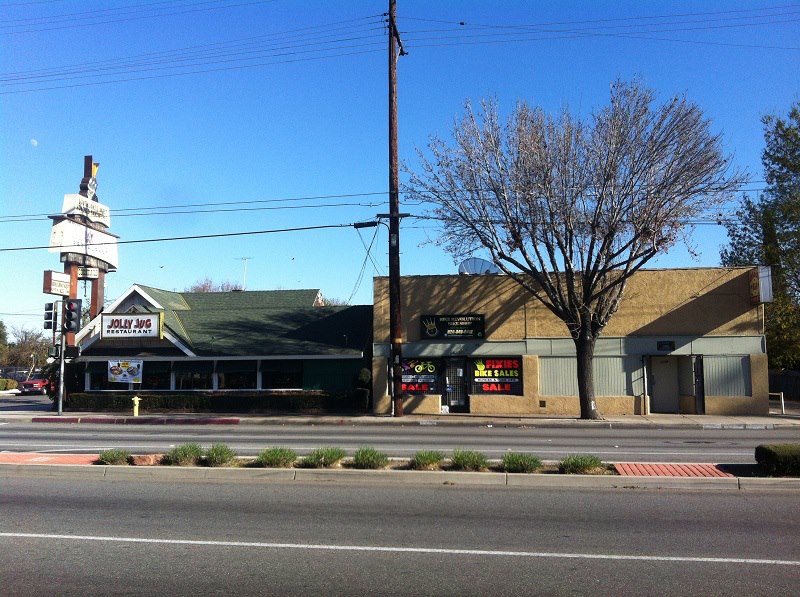
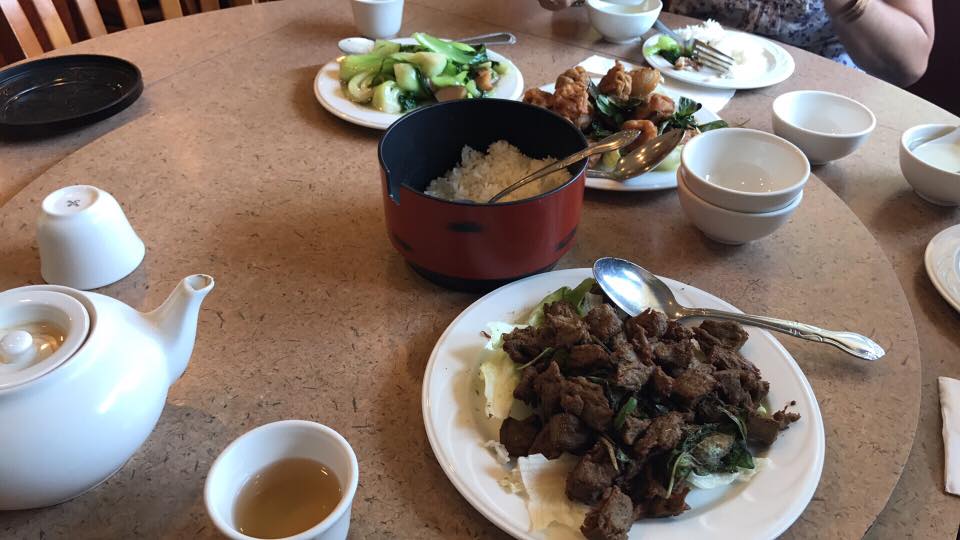

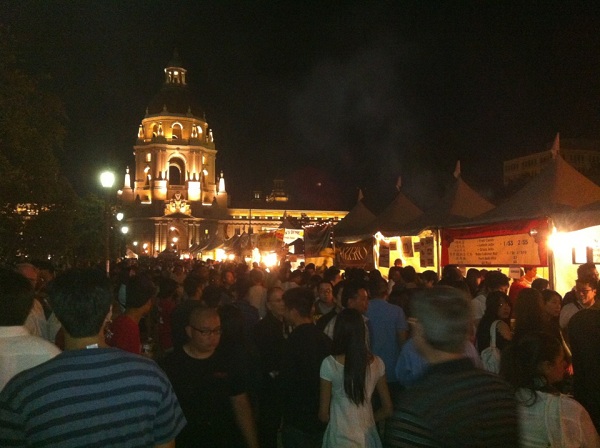

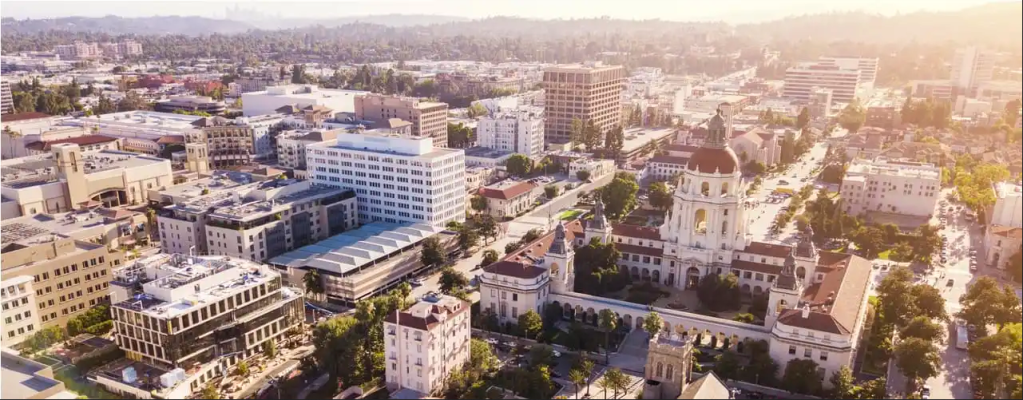

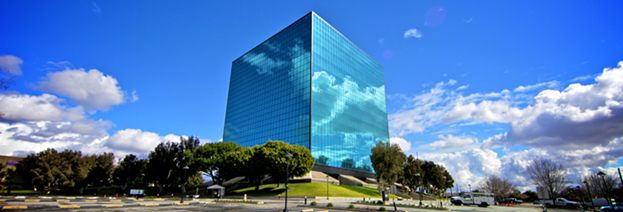

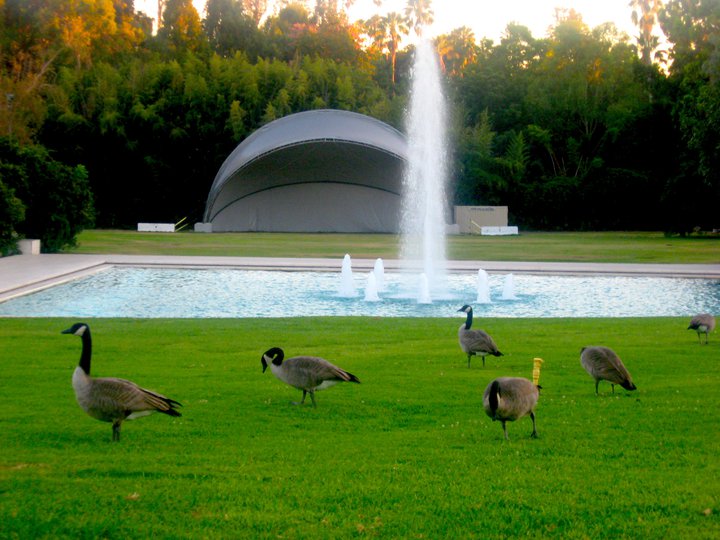
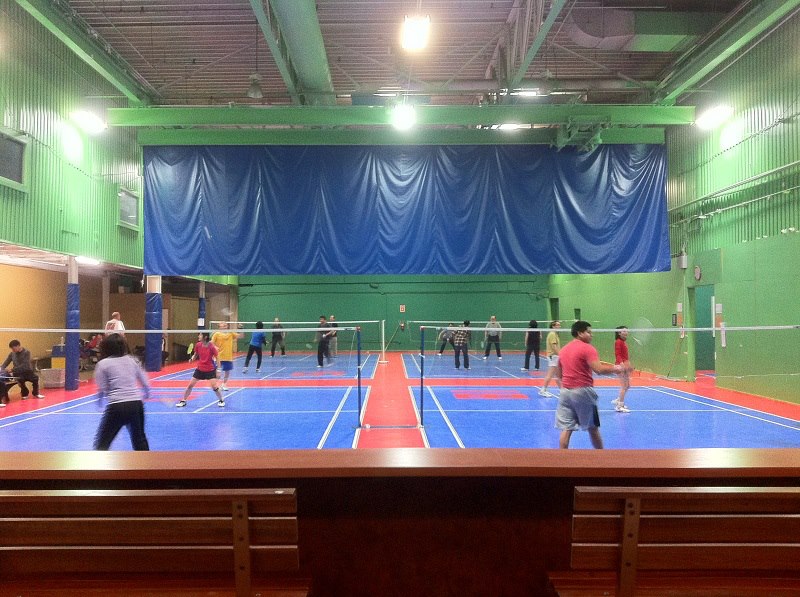





What a thorough exploration, thanks! I never knew the origins of the LADPW building (which we can see from our El Sereno hillside, so I guess we’re “SGV-adjacent”).
I love how Vromans has adapted to survive over the years – I love books but if they didn’t lean into gifts and other things I don’t know if they would have been able to survive, and they’re still primarily a bookstore. They even have a nice wine bar now!
Sadly, Pasadena Central Library is closed indefinitely pending seismic retrofitting: https://www.cityofpasadena.net/library/branches/central-library/
Hopefully they can reopen in time for their centennial.
Finally, I guess this is just outside the area, but since you mentioned Huntington Drive and potential uses, you might be interested to see the alternatives being studied for the Los Angeles part of Huntington as part of funds made available by the cancellation of the 710 extension.
Website: https://710mobilityla.org/huntington-drive/
Slides: https://www.flipsnack.com/arellanoassociates/laboe-huntington-public-outreach-mtg2-06-01-2022-final-eng/full-view.html
Recording: https://vimeo.com/716570494/6b8346d01c
LikeLike
Thank you for the comment. Yes, I have long been semi-obsessed with the Blue Cube and would like very much to be allowed to go inside and poke around.
That is sad news about the library. Surely it will re-open someday. I’ll make a note, though, so library loving explorers aren’t misled.
And finally, I knew I had seem something about the possible re-design of Huntington Drive but couldn’t find anything online. Thanks so much!
LikeLike